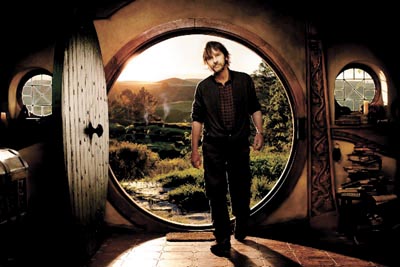|

“The Hobbit” is a simple children’s book by J. R. R. Tolkien. A group of dwarves try to take back their kingdom* from the dragon that took it from them. The Hobbit Bilbo Baggins (Martin Freeman) is chosen for the adventure* by the wizard* Gandalf (Ian McKellen). Baggins, however, is unwilling at first to make the journey.
But Peter Jackson and co-writers Fran Walsh and Philippa Boyens use material from other Tolkien stories to expand the film to include flashbacks* from all kinds of characters. We get more dwarf* history, more elf* history and more Middle Earth.
We also get Gollum (Andy Serkis), who made his first appearance in this book as a cave-dwelling former Hobbit corrupted* by the ring of power. He meets Baggins, which starts everything that happens in the subsequent “Lord of the Rings” books.
Jackson knows how to film action. Perhaps you cannot really tell the dwarves apart (they all look alike) — but that doesn’t matter, at least not in this installment*.
“The Hobbit” is full of moments in which the characters are dwarfed in a scene by the grandeur* of their environment — at one point standing on what looks like the end of the world, off which literally dozens of waterfalls seem to flow into eternity*.
The opening half-hour or so seems like so much throat-clearing and scene-setting. But once these dwarves, accompanied by Baggins and Gandalf, hit the road, “The Hobbit” takes off and doesn’t come down until the credits* roll.
Jackson has pioneeringly shot the film in HFR, or High Frame Rate: 48 frames a second, as opposed to the traditional 24, giving a much higher definition and smoother movement effect. The effect is like the first time you saw a really revealing high-definition TV image.
(SD-Agencies)
|

